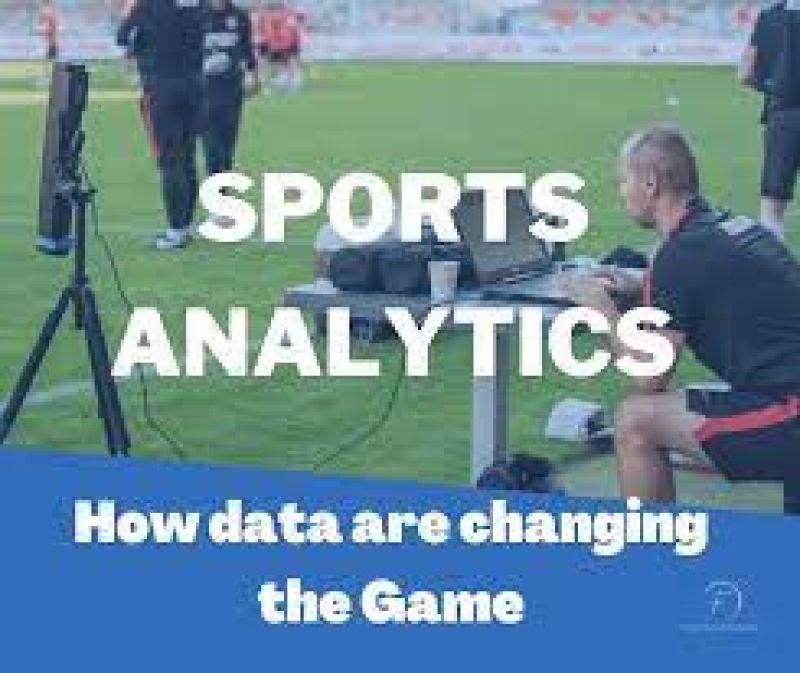The availability of data and statistical analysis tools has empowered coaches and players at all levels to improve their understanding of the game and make more informed decisions.

Football, known for its passionate fans and exhilarating moments, has always been a sport of intense human skill and strategy. However, in recent years, a new player has entered the field and revolutionized how the game is understood and played: data and statistics. Football analytics, driven by advancements in technology and the availability of large amounts of data, have transformed the sport, providing teams, coaches, and fans with unprecedented insights into player performance, tactics, and game outcomes.
The impact of football analytics extends beyond the professional game, reaching grassroots and amateur levels as well. The availability of data and statistical analysis tools has empowered coaches and players at all levels to improve their understanding of the game and make more informed decisions. Amateur teams can now access player performance data, keep tabs on their progress over time, and identify areas for improvement. This democratization of football analytics has allowed the sport to evolve and become more data-driven at every level, fostering a culture of continuous learning and development.
At its core, football analytics involves the collection, analysis, and interpretation of data to gain a deeper understanding of the game. Every aspect of the game can now be quantified, from simple metrics such as goals, assists, and shots on target to more complex data points like expected goals (xG), passing accuracy, and distance covered. These statistics provide valuable insights into the effectiveness of different strategies, player strengths and weaknesses, and the overall performance of a team.
One of the significant impacts of football analytics is player recruitment and talent evaluation. Clubs now rely on data-driven approaches to identify and acquire players who can make a substantial impact on the pitch. By analyzing a player's performance metrics, teams can assess their contributions in various areas, such as goal-scoring ability, passing accuracy, defensive effectiveness, and even their positioning on the field. This data-driven approach reduces the reliance on subjective evaluations and gut instincts, leading to more informed and objective decision-making in player recruitment.

ALSO READ: The Beautiful Game: Capturing The Aesthetics And Emotion Of Football Photography
The application of football analytics is not limited to the field of play. Clubs and organizations leverage data to enhance their business operations, marketing strategies, and fan engagement. By analyzing fan behavior, ticket sales, social media interactions, and other metrics, clubs can better understand their audience and tailor their marketing campaigns to meet the demands and preferences of fans. This data-driven approach helps clubs build stronger connections with their supporters and create a more immersive and personalized fan experience.
Moreover, football analytics has paved the way for innovations in sports technology. From wearable devices that track player performance in real-time to advanced camera systems that capture every movement on the field, technology has become an integral part of data collection and analysis. These technological advancements have improved the accuracy and efficiency of data capture and opened doors for new possibilities in performance monitoring, injury prevention, and tactical analysis.
As football analytics continue to evolve, ethical considerations surrounding data privacy and fair play have come to the forefront. It is essential to ensure that the collection and use of data adhere to ethical guidelines, protecting the privacy and rights of players and individuals involved in the sport. Additionally, football governing bodies must ensure that data-driven insights uphold the spirit of fair competition and the integrity of the game. Striking a balance between innovation and ethical responsibility is crucial to harnessing the full potential of football analytics.
Furthermore, football analytics have transformed the way teams strategize and approach matches. Coaches now have unlimited access to real-time data during games, allowing them to make tactical adjustments based on the performance of individual players and the overall team. They can analyze data on passing patterns, attacking tendencies, defensive weaknesses, and more, enabling them to adapt their game plans on the fly. This data-driven approach has given rise to a more dynamic and flexible style of play, as teams can quickly identify and exploit the weaknesses of their opponents.
In addition to on-field tactics, football analytics have also influenced player development and training methods. By analyzing a player's performance data, teams can identify areas for improvement and tailor their training programs accordingly. For example, if a player's passing accuracy is subpar, coaches can design drills and exercises to specifically target that aspect of their game. This individualized approach to player development maximizes the potential of each athlete and accelerates their growth.
Football analytics have not only impacted teams and coaches but have also enriched the experience for fans. With the rise of data visualization tools and interactive platforms, fans can now access a wealth of statistical information and insights about their favorite teams and players. Whether it's analyzing match statistics, tracking player performance, or exploring historical trends, fans can engage with the game on a deeper level and have fact-based discussions and debates.
However, it is important to note that while football analytics provide valuable insights, they are not a substitute for the human element of the game. Intangible aspects such as teamwork, leadership, and the ability to perform under pressure cannot be fully captured by data alone. Football is a complex sport that relies on the skills, creativity, and decision-making abilities of the players. Analytics should be used as a tool to enhance understanding and decision-making, but not as a definitive measure of a player's or team's worth.
In conclusion, football analytics have transformed the game by harnessing the power of data and statistics. It has revolutionized player recruitment, tactical strategies, and player development, providing teams with a competitive edge. Fans can now engage with the sport on a deeper level, armed with a wealth of statistical information.
However, it is crucial to strike a balance between data-driven insights and the intrinsic human elements that make football the beautiful and unpredictable game that it is. Football analytics have undoubtedly changed the game, but it is ultimately the blend of data, skill, and passion that continues to captivate fans around the world.

